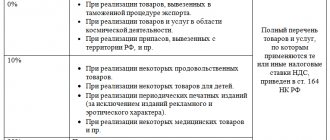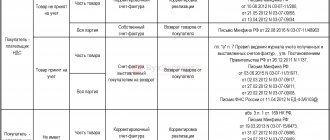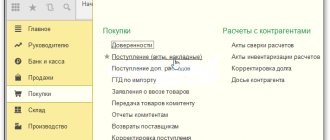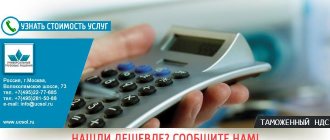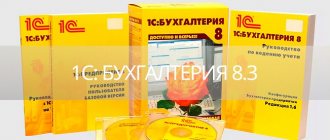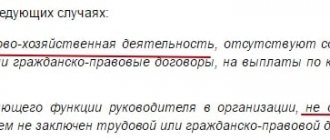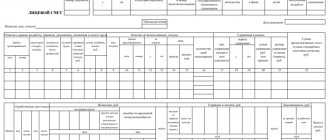Carrying out export operations for Russian businessmen is beneficial from an economic point of view. Since the activities of exporters lead to an improvement in the country’s economic indicators and an increase in the balance of payments, the government tries to encourage such activities.
The law provides two important benefits for companies selling goods abroad: a zero rate and a refund of input value added tax.
It is these special conditions that give exporters greater benefits compared to domestic trade. Any Russian participant in foreign economic activity can take advantage of the special conditions.
However, in order to apply a zero rate and deduction for a specific transaction, a number of conditions must be met, for example: collecting special documents, meeting the deadlines for their submission and making the correct registration.
In this article we will try to talk in detail about all the intricacies of VAT refunds when exporting. However, if you have never encountered this issue before, it is advisable to consult with an experienced specialist.
Do you want to figure it out, but don’t have time to read the article? Lawyers will help
Entrust the task to professionals. Lawyers will complete the order at the cost you specify
8 lawyers on RTIGER.com can help with this issue
Solve the issue >
VAT when exporting goods from Russia
The peculiarities of the value added tax when exporting products are discussed in clause 2 of Art. 151, paragraph 1, art. 164, paragraph 1, art. 165, paragraph 9 of Art. 167 of the Tax Code of Russia. Exported goods and materials are not sold to Russian consumers, so the state returns the tax previously paid by the manufacturer. The terms “no tax paid” and “0% rate” are used synonymously. All primary documents confirming the export of goods that should be submitted to the tax office are specified in the agreement on the Eurasian Economic Union dated May 29, 2014 (Appendix No. 18) and in Article 165 of the Tax Code of the Russian Federation. Taxpayers and agents provide supporting documents in electronic format; the validity of the provisions is enshrined in the order of the Federal Tax Service dated September 30, 2015 No. ММВ-7-15/427.
Export - customs procedure
Export is the sale of goods and services from the territory of Russia and other EAEU countries to third countries without obligations for re-importation (Article 139 of the EAEU Labor Code).
An important condition is that goods and services must actually cross the customs border of the EAEU countries; without this, export is impossible. For example, a foreign company buys raw materials from a domestic company, which will then be used to produce goods at a factory in Russia. Such an operation is not an export, although the buyer is a foreign company, since the raw materials did not leave the borders of the Russian Federation.
Important! The Eurasian Economic Union includes: Russia, Armenia, Belarus, Kazakhstan and Kyrgyzstan. Within the framework of the union there is a single customs space.
Tax accounting and VAT reporting for export
In tax accounting, operations for the export of goods are recorded separately from the rest, using special registers. Organizations are required to maintain separate VAT accounting for exports and domestic sales of goods, works and services. It consists of using subaccounts and separate statements and journals. Sections 4-6 are completed in the tax return:
- if the zero rate is confirmed, then sheet 4 of the declaration is drawn up;
- if not confirmed - sheet 6 of the declaration;
- sheet 5 is rarely used.
The declaration form identifies more types of export transactions than the Tax Code of the Russian Federation - an individual accounting register is provided for each of them.
ConsultantPlus experts analyzed in detail the specifics of taxation during exports: how to calculate VAT, what rates to use, how to maintain separate accounting. Use these instructions for free.
How is VAT calculated on unconfirmed exports?
The Ministry of Finance of Russia, in its letter No. 16-00-14/177 dated May 27, 2003, gives the following recommendations for accounting for export VAT:
If the export is not confirmed in a timely manner, then after 180 days the following entries are made in accounting:
- Dt 68 (VAT to be refunded), Kt 68 (VAT to be accrued) - VAT is accrued on unconfirmed exports;
- Dt 99 “Profits and losses”, Kt 68 - penalties accrued;
- Dt 68 (VAT accrued), Kt 51 - VAT and penalties are transferred to the budget.
Is the right to deduct “input” VAT retained if the export is not confirmed on time? The answer to this question is in ConsultantPlus. Get free demo access to K+ and go to the Ready Solution to find out all the details of this procedure.
For information on necessary actions if export confirmation is untimely, read the article “What to do if export is not confirmed within the prescribed period.”
Tax rate for exporters
The tax rate for the export of goods from Russia is 0% (subclause 1, clause 1, article 164 of the Tax Code of the Russian Federation). In other words, exporters are not exempt from value added tax: they are its payers, must submit declarations, and have the right to claim deductions for incoming amounts. To take advantage of the preferences, you must confirm your export transactions. They must be confirmed by documents provided for in Article 165 of the Tax Code of the Russian Federation.
Here are the main documents for confirming a 0 rate when exporting in 2021:
- original or copy of a foreign trade contract;
- customs declaration;
- copies of transport and shipping certificates.
In addition, the zero rate applies to the customs regimes listed in paragraph 2 of Art. 151 Tax Code of the Russian Federation:
- export;
- customs warehouse for export;
- free customs zone;
- re-export;
- removal of supplies.
No customs stamps and export confirmation
As we noted earlier, the presence of customs marks on the accompanying documents is a prerequisite for confirming the zero rate for export. However, the situation with the export of goods to third countries through the territories of the EAEU member countries, with which customs clearance has been cancelled, is an exception. In this case, the documents are presented to the tax authority with a mark from the customs authorities: “Export is permitted” and without o (paragraph 3, subparagraph 3, subparagraph 4, paragraph 1, article 165 of the Tax Code of the Russian Federation, paragraph 1 of the letter of the Federal Tax Service of Russia dated June 10, 2013 No. ED-4-3/ [email protected] , letter of the Ministry of Finance of the Russian Federation dated 02/04/2015 No. 03-07-08/4343, dated 10/19/2010 No. 03-07-08/296 (clause 3)).
See also our material “How to confirm a 0% rate if goods are exported without border customs control .
Right to refuse
Since 2022, taxation of value added tax on exports at 0% has become not an obligation, but a right of payers. They were given the opportunity not to officially apply the exemption to exported goods. Refusal is possible for all export transactions as a whole, provided that an application is submitted to the tax service no later than the 1st day of the quarter from which the taxpayer plans to pay VAT according to the usual rules.
IMPORTANT!
You cannot refuse the zero rate when exporting to the EAEU. The provisions of the Treaty on the EAEU regarding the justification of clause 3 of the protocol do not provide for such an opportunity for taxpayers (clause 1 of Article 7 of the Tax Code of the Russian Federation).
The total period of refusal is no less than a year. Payers need this if they want to accept tax deductible at rates of 20% or 10% from suppliers who, having the right to a zero rate, do not want to confirm it, highlighting the regular tax in their invoices. To apply this benefit, the company will have to collect documents to confirm the 0 rate for export and submit them to the Federal Tax Service.
In past periods, tax authorities paid close attention to those who regularly “forget” to collect the necessary documents. Organizations were cunning, tried to buy documents for VAT, carried out some export operations at the usual rate of 10% or 20% (18% until 2022), but processed something at 0%. Now there is no need to resort to such difficulties.
Features of reflecting deductions in the VAT return depending on the type of goods exported
The procedure for filling out a VAT return depends on which group the exported goods belong to.
Note! From the 3rd quarter of 2022, the VAT return was updated by order of the Federal Tax Service dated March 26, 2021 No. ED-7-3/ [email protected]
You will find a line-by-line algorithm with examples of filling out all twelve sections of the report in ConsultantPlus. Trial access to the system can be obtained for free.
We are talking about dividing exported goods into raw materials and non-raw materials. The main criterion for such classification is the degree of human participation in the formation of the main characteristics of the product.
Enlarged groups of raw materials are listed in clause 10 of Art. 165 Tax Code of the Russian Federation:
Commodity codes were approved by Decree of the Government of the Russian Federation dated April 18, 2018 No. 466.
Goods not listed in clause 10 of Art. 165 of the Tax Code of the Russian Federation, relate to non-raw materials (letter of the Federal Tax Service of Russia dated August 3, 2016 No. 1-4-05/0021).
For these groups of goods, the following procedure for applying VAT tax deductions is established:
- Input VAT on the value of non-commodity goods intended for export is accepted for deduction in the quarter when the goods are registered and the other mandatory conditions for deduction are met.
Find out about the conditions for applying deductions from the material “What is the procedure for applying (accepting) tax deductions for VAT: conditions”.
- Input VAT on the cost of raw materials purchased for export is accepted for deduction in the quarter when the zero tax rate is justified (clause 1, clause 10 of Article 165, clause 3 of Article 172 of the Tax Code of the Russian Federation).
How to apply a VAT deduction if the product is a raw material, but it is not on the government list, find out in this publication.
VAT tax base for export of goods
The tax base for value added tax when selling goods for export from the Russian Federation is determined as the cost of goods under the terms of concluded agreements (clause 1 of Article 154 of the Tax Code of the Russian Federation).
Please note that the tax base should be determined exclusively in Russian rubles. If the contract is concluded in a foreign currency, then recalculate at the official ruble exchange rate of the Central Bank of Russia on the date of shipment of the goods.
But the moment of determining the tax base for an export transaction directly depends on when you collected the package of documents. Please note that when exporting goods to the EAEU, the tax base is determined in the following order:
- If documents and confirmations are prepared within 180 days from the moment the goods are determined to be subject to the customs export procedure, then determine the tax base as the last day of the reporting quarter in which the documents were collected and include the information in the declaration.
- If documents and confirmations were collected after 180 days, then determine the tax base at the time of shipment.
For transactions with partners in the EAEU, please note that the confirmation period for the 0 VAT rate for export is 180 days from the date of shipment. This affects the determination of the tax base. VAT at a rate of 0% on the advance payment is not required to be charged and paid, according to the general rules.
IMPORTANT!
In his work, the taxpayer is obliged to organize separate accounting when registering transactions of a different nature. For example, when exporting raw materials and non-commodity goods and when producing products for sale in the Russian Federation. Methods for maintaining separate accounting should find a place in the accounting policy of the entity.
Accounting for export transactions in 1C 8.3 Accounting - step-by-step instructions
Attention! The VAT rate has been changed from 01/01/2019 from 18% to 20% and from 18/118 to 20/120.
The organization entered into an export contract with a foreign buyer Hotseason sp. zoo (Poland) for the supply of non-commodity goods in the amount of 10,000 USD.
On January 17, an advance payment of 40% in the amount of 4,000 USD was received from the buyer.
On February 12, non-commodity goods Fans (1,000 pcs.) worth RUB 400,020 were purchased from the supplier Aurora LLC. (including VAT 18%) for export shipment.
On March 13, advance customs payments were paid (customs duty 750 rubles).
On March 15, the buyer Hotseason sp. zoo goods were shipped for export: Fans (1,000 pcs.) worth 10,000 USD.
On March 15, customs declaration of goods was carried out, a mark on the customs declaration “Release permitted” was received and the goods were transferred to the carrier.
In accordance with the contract, the transfer of ownership of goods occurs at the moment of transfer of goods to the carrier, released under the customs export regime. Delivery basis FCA Moscow.
On March 25, the buyer of Hotseason sp. zoo transferred the balance of payment for the goods in the amount of 6,000 USD.
Conditional courses for example design:
- January 17, the exchange rate of the Central Bank of the Russian Federation is 62.00 rubles/USD;
- March 15, the exchange rate of the Central Bank of the Russian Federation is 62.00 rubles/USD;
- March 25, the exchange rate of the Central Bank of the Russian Federation is 63.00 rubles/USD;
- September 05, the rate of the Central Bank of the Russian Federation is 62.00 rubles/USD;
- October 1, the exchange rate of the Central Bank of the Russian Federation is 62.00 rubles/USD.
Export operations, export sales in 1C 8.3 step-by-step instructions →
| date | Debit | Credit | Accounting amount | Amount NU | the name of the operation | Documents (reports) in 1C | |
| Dt | CT | ||||||
| Purchase of goods and their sale for export | |||||||
| Receipt of advance payment from a foreign buyer | |||||||
| January 17 | 52 | 62.22 | 248 000 | 248 000 | Receipt of prepayment from the buyer to the transit account | Receipt to the bank account - Payment from the buyer | |
| Purchasing goods | |||||||
| 12th of February | 41.01 | 60.01 | 339 000 | 339 000 | 339 000 | Acceptance of goods for accounting | Receipt (act, invoice) - Goods (invoice) |
| 19.03 | 60.01 | 61 020 | 61 020 | Acceptance for VAT accounting | |||
| Registration of SF supplier | |||||||
| 12th of February | — | — | 400 020 | Registration of SF supplier | Invoice received for receipt | ||
| 68.02 | 19.03 | 61 020 | Acceptance of VAT for deduction | ||||
| — | — | 61 020 | Reflection of VAT deduction in the Purchase Book | Purchase Book report | |||
| Transfer of advance payment to customs | |||||||
| March 13 | 76.09 | 51 | 750 | 750 | 750 | Transfer of advance payment (customs duty) | Debiting from the current account - Other settlements with counterparties |
| Sales of goods for export | |||||||
| March 15th | 62.21 | 90.01.1 | 620 000 | 620 000 | 620 000 | Revenue from sales of goods | Sales (act, invoice) - Goods (invoice) |
| 90.02.1 | 41.01 | 339 000 | 339 000 | 339 000 | Write-off of the cost of goods | ||
| 62.22 | 62.21 | 248 000 | 248 000 | 248 000 | Advance offset | ||
| Issuance of export invoices in foreign currency (VAT rate 0%) | |||||||
| March 15th | — | — | 10 000 | Issuing invoices for shipment in foreign currency (VAT rate 0%) | Invoice issued for sales | ||
| Accounting for customs payments | |||||||
| March 15th | 44.01 | 76.09 | 750 | 750 | 750 | Customs duty is included in distribution costs | Manual entry - Operation |
| Receipt of payment from a foreign buyer | |||||||
| March 25 | 52 | 62.21 | 378 000 | 378 000 | Receipt of payment from the buyer to the transit account | Receipt to the bank account - Payment from the buyer | |
| 62.21 | 91.01 | 6 000 | 6 000 | 6 000 | Revaluation of receivables in foreign currency | ||
Refund, refund or deduction of VAT on export
All three terms meaning reduction or exemption from tax payments are often found on the Internet, and they are easy to confuse:
- the deduction refers to the calculation of the amount of tax (Article 171), determined by the enterprise itself when filing a declaration;
- refund or return of VAT when exporting from Russia is a general concept for offset and return (Article 176), the issue is decided by the Federal Tax Service on the basis of submitted documents: declarations and applications.
Paying taxes often leads to a situation where, due to deductions, the tax amount becomes negative. Further steps for tax refund:
- The company submits a declaration and an application for credit or refund of VAT. Offset on the declaration - the amount goes towards fines, arrears or future payments; If the documents indicate a return, the amount is transferred to a bank account.
- The tax office checks information in reporting declarations within three months, as provided for in Article 88 of the Tax Code of the Russian Federation on a 0 percent VAT rate for exports. Tax authorities are authorized to request additional documents, such as copies of invoices, sales ledgers or clarifying declarations.
- She then makes a decision within seven days about full, partial, or refusal of reimbursement. The form of compensation - offset or refund - is determined either by the Federal Tax Service to cover arrears to the budget, or according to the application.
- The Federal Inspectorate sends payment documents to the Treasury the next day after the decision on the return is made. The money is transferred by the Treasury within five days.
VAT refund by tax authorities
After the taxpayer submits a VAT return with a package of documents confirming the right to apply the 0 percent rate, the tax authorities begin a desk audit of the validity of applying this rate (Article 88 of the Tax Code of the Russian Federation).
If the tax office makes a positive decision, the taxpayer reserves the right to apply a 0 percent rate. And in case of refusal, you will need to submit a “clarification” and pay an additional amount of unpaid VAT to the budget for this shipment, as well as penalties and fines for late payment of tax.
See also the material “How is VAT refunded: return (refund) scheme?”
Step-by-step instructions for confirming the zero VAT rate for export
When exporting to Belarus, Kazakhstan, Armenia, zero VAT is confirmed:
- An agreement under which a buyer from an EAEU country imports products.
- Application for import of goods and payment of indirect taxes from the buyer.
- Transport or shipping documents (consignment note TTN is recommended).
How to confirm the 0 VAT rate when exporting to other countries - send to the Federal Tax Service:
- An agreement or other documents related to the transaction, if there is no agreement (for example, an offer and acceptance).
- A copy of the customs declaration or an electronic register (a separate register is provided for each type of transaction).
- Copies of transport or shipping documents with customs marks or their electronic register.
Other documents (bank statements, invoices) do not have to be attached to the declaration, but should be kept in case the tax office asks to confirm the information specified in the declaration.
If the taxpayer has not provided documents confirming the zero tax rate, then VAT must be calculated according to general principles, and all calculations must be disclosed in the declaration. For example, at a rate of 10% or 20%.
Results
Confirmation of export is made on the basis of a package of documents provided for in Art.
165 Tax Code of the Russian Federation. If the package of documents on the customs declaration or shipping documents does not contain all the necessary marks from the customs authority, the tax authority will refuse to confirm the zero VAT rate. But even if documents of adequate quality are collected in full, violation of the export confirmation deadline will lead not only to additional work on drawing up an updated declaration and the accrual of VAT at a rate of 20% (or 10% depending on the type of goods exported), but also to the payment of a penalty. Refund of input VAT is made after checking the tax return based on the taxpayer’s application if he has no arrears. You can find more complete information on the topic in ConsultantPlus. Free trial access to the system for 2 days.

